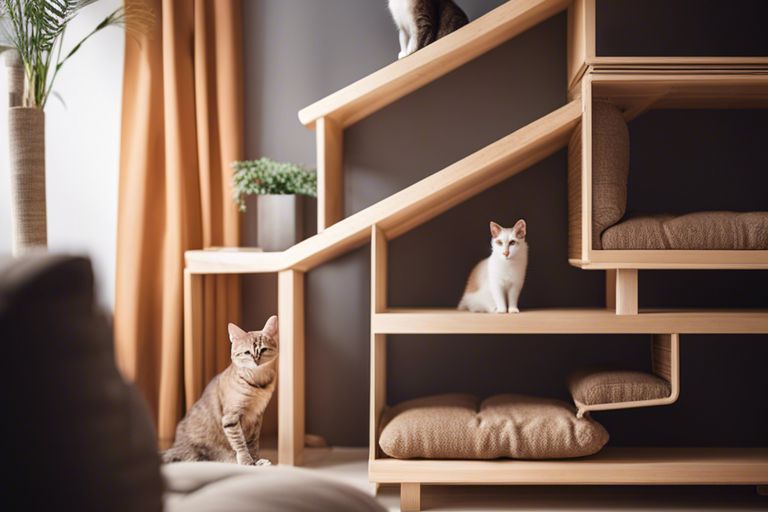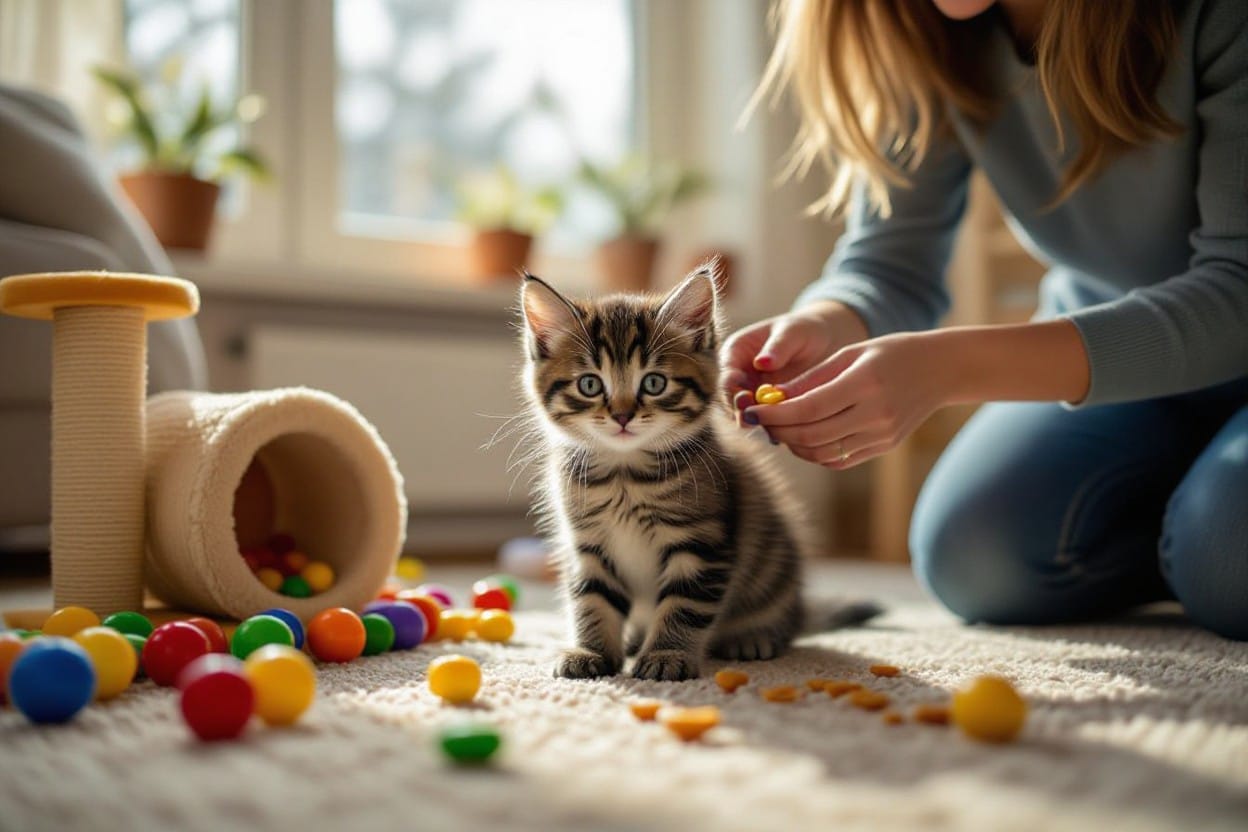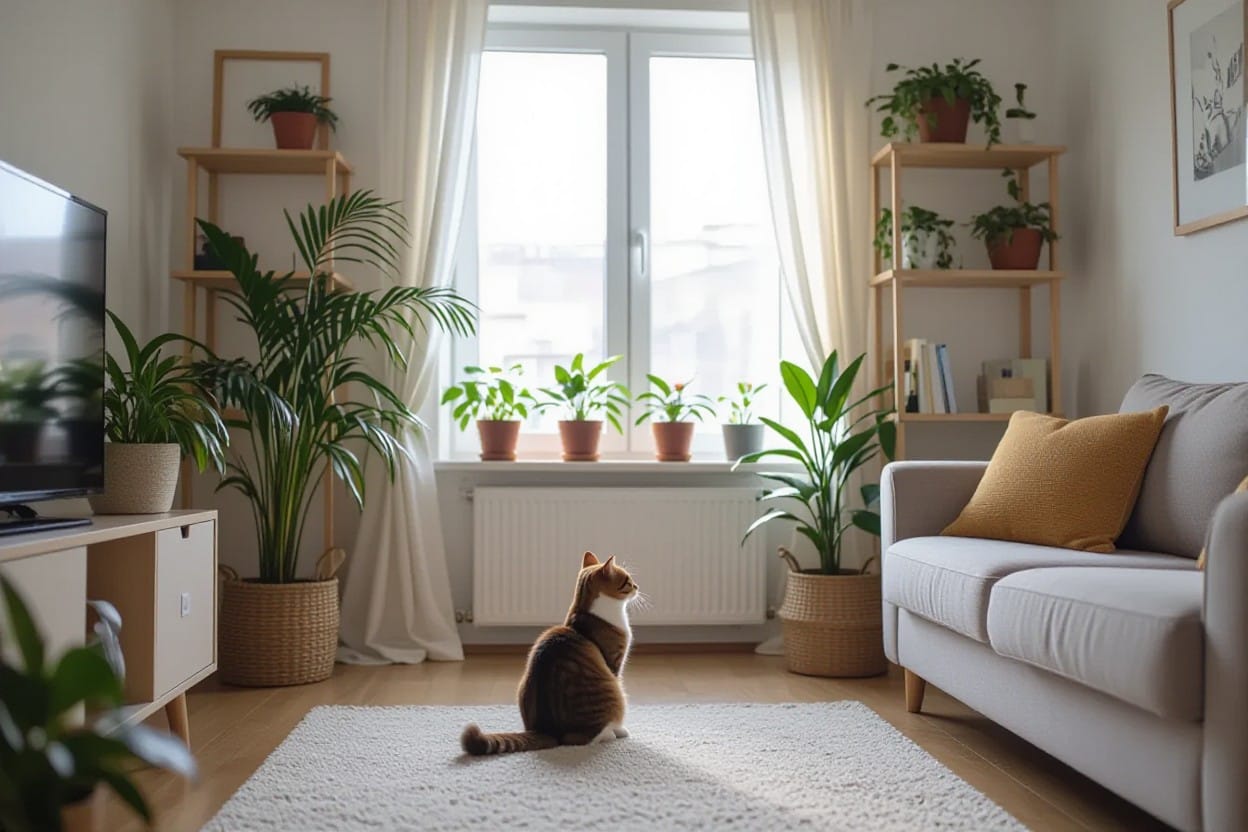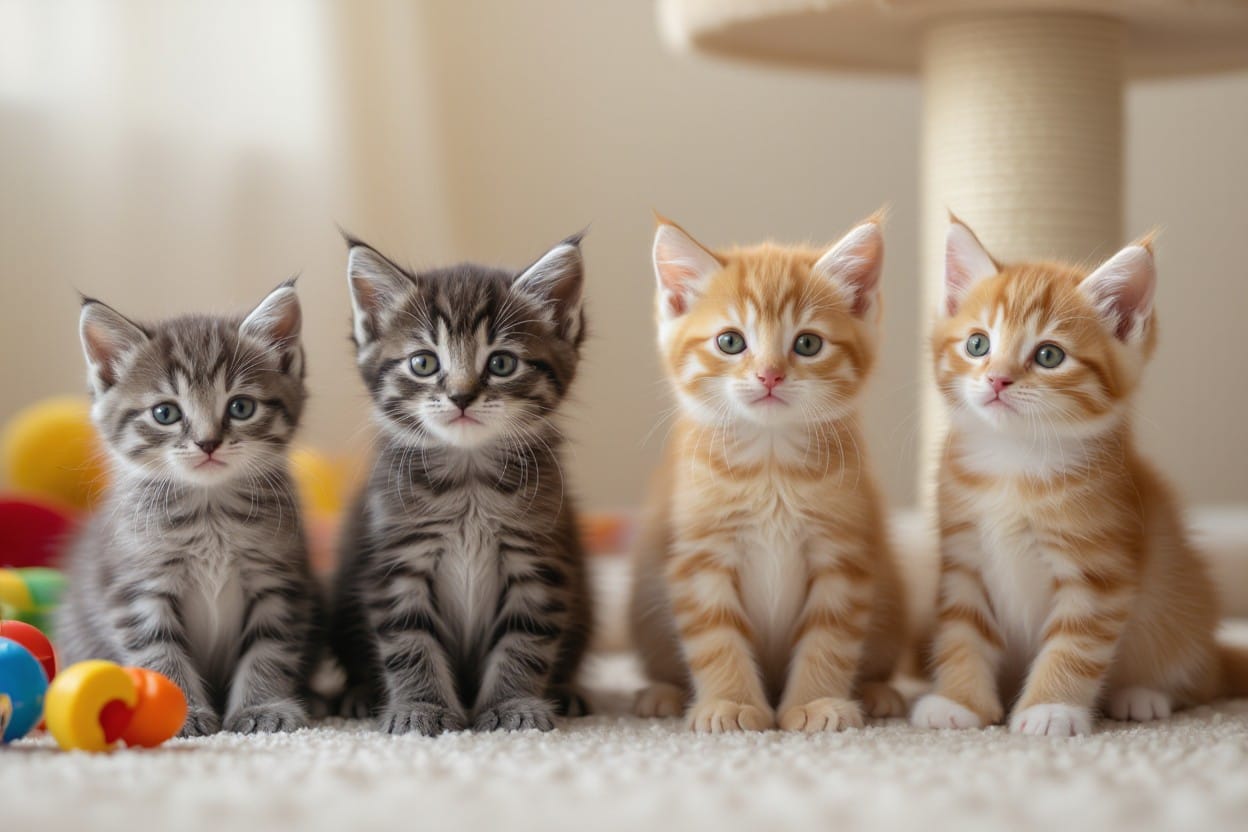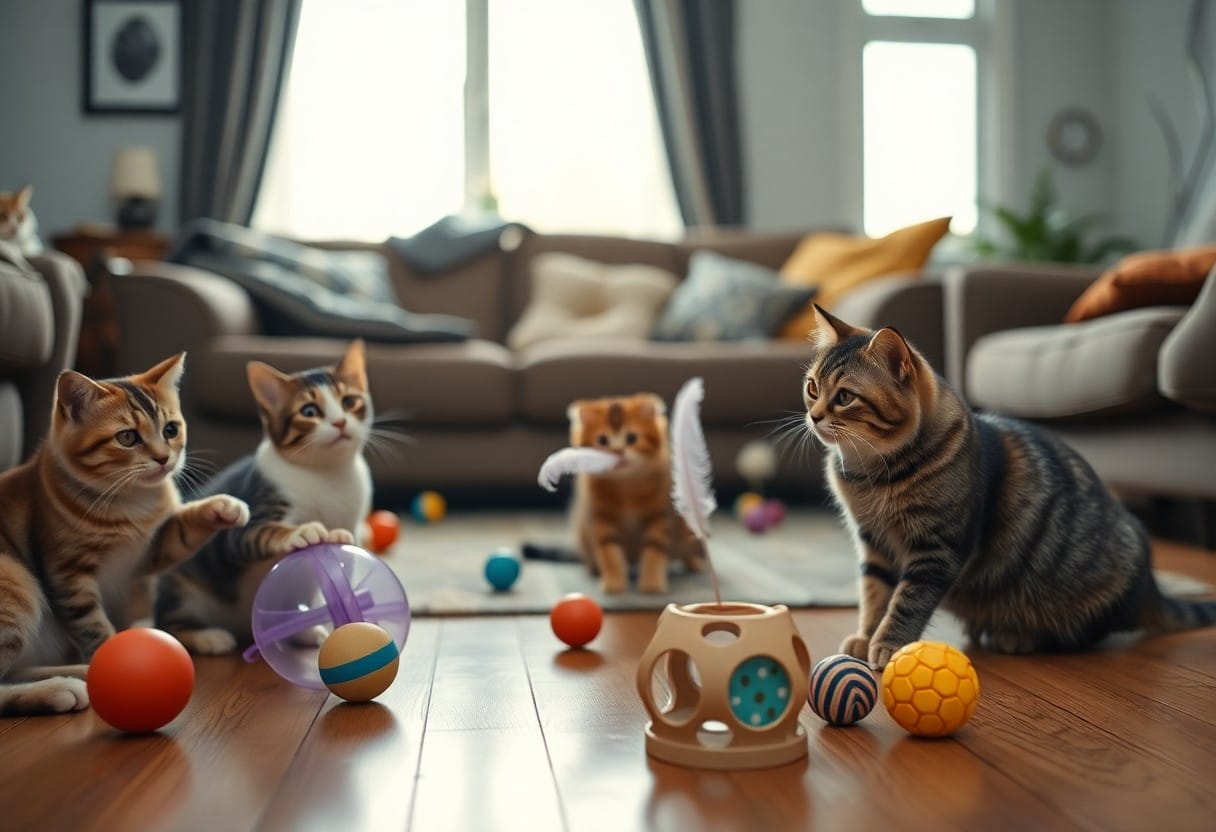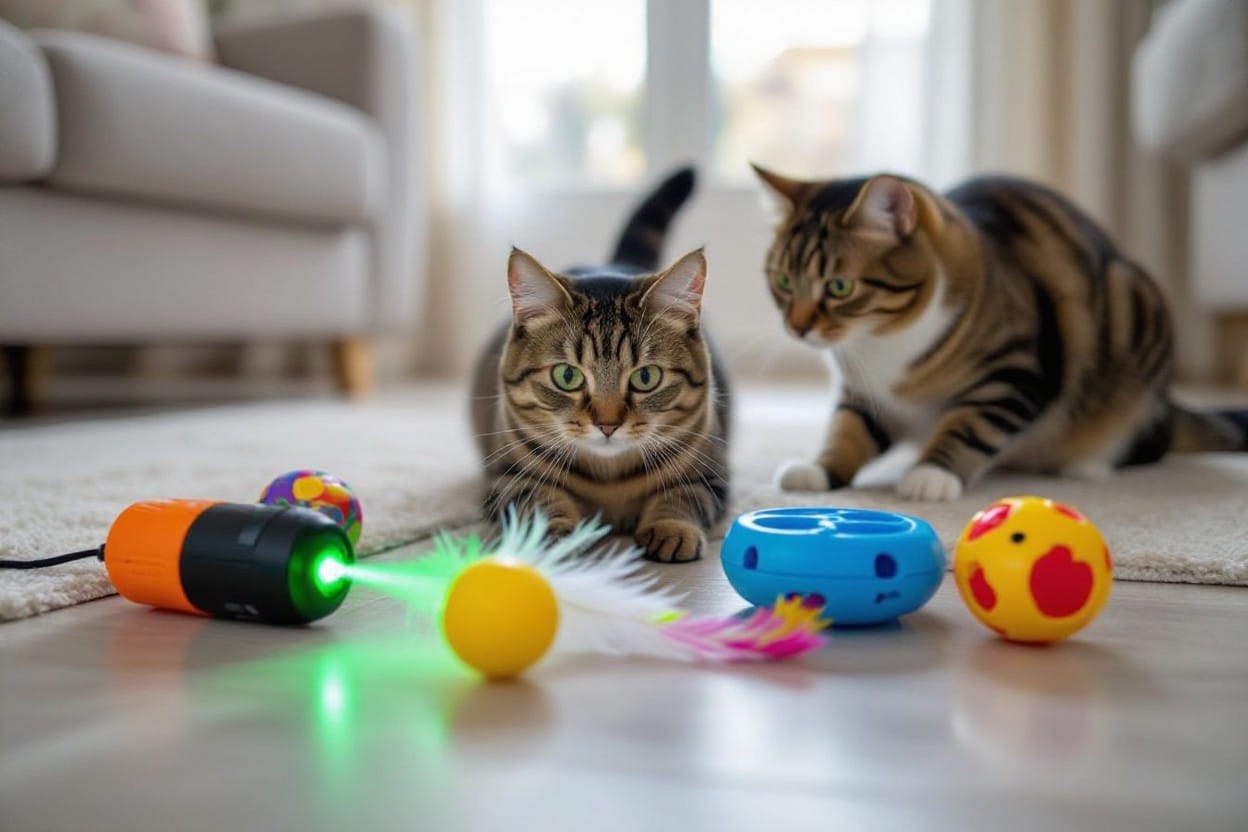Many cat owners know the struggle of trying to keep their feline friends safe and happy in their homes. Cats are curious by nature and can easily get into mischief if the environment is not properly cat-proofed. In this blog post, we will provide you with expert tips and advice on how to create a cat-friendly home by implementing simple cat-proofing measures.
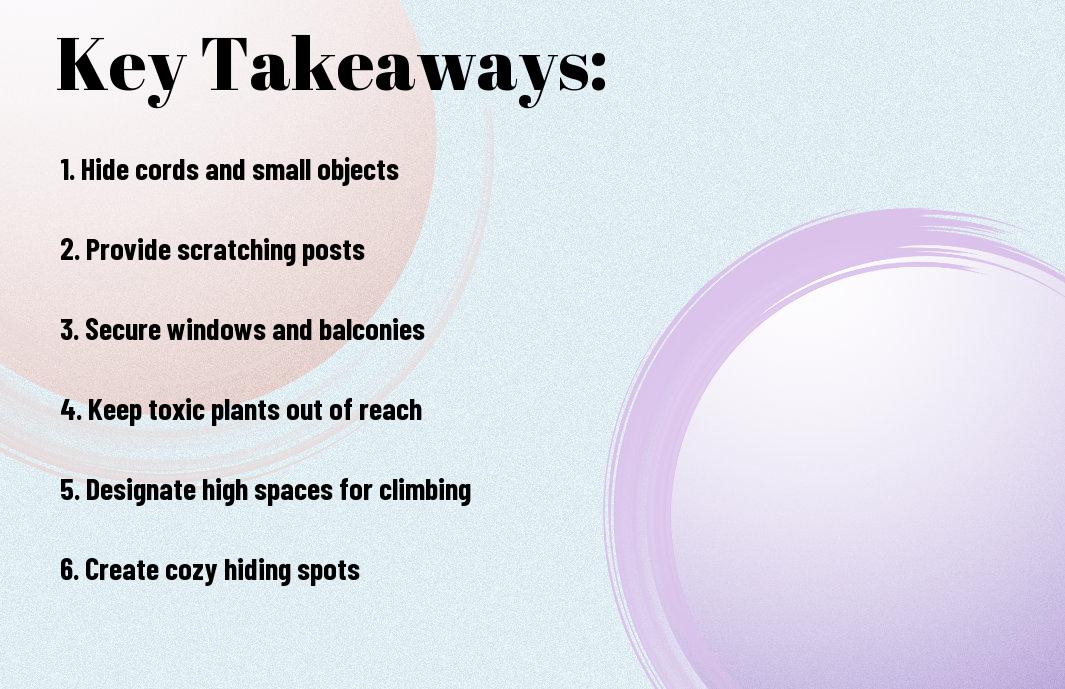
The Basics of Cat-Proofing
Start with Safety
Some of the basic steps to cat-proof your home revolve around ensuring the safety of your feline friend. Cats are curious by nature and can get themselves into all kinds of mischief if proper precautions are not taken.
Identifying Potential Hazards
One of the first steps in cat-proofing your home is to identify potential hazards that could harm your cat. This includes securing windows and balconies to prevent falls, keeping toxic plants out of reach, and making sure all electrical cords are hidden or protected.
Hazards such as small objects that could be swallowed, toxic foods, chemicals, and sharp objects should also be carefully removed or stored away from your cat’s reach.
To
By taking the time to thoroughly assess your home for potential hazards, you can create a safer environment for your beloved feline companion.
Furniture and Decor
Choosing Cat-Friendly Furniture
While designing a cat-friendly home, it’s important to choose furniture that can withstand your feline friend’s playful nature. Opt for scratch-resistant materials like leather or microfiber that are less likely to be damaged by your cat’s claws. Avoid furniture with delicate fabric or intricate details that could easily be ruined. Additionally, consider investing in cat-friendly furniture such as scratching posts, cat trees, and cozy beds to provide your cat with designated spaces to play and rest.
Protecting Your Belongings
Any cat owner knows that these curious creatures love to explore and sometimes get into mischief. To protect your belongings from being knocked over or damaged, consider using adhesive furniture pads to secure items that could be easily tipped over by your cat. You can also use double-sided tape on furniture edges to deter your cat from scratching or climbing on certain pieces. Another option is to provide plenty of alternative entertainment for your cat, such as interactive toys and tall scratching posts, to redirect their energy away from your decor.
Plants and Toxins
Despite their curious nature, cats are often drawn to plants, some of which can be toxic to them. To create a cat-friendly home, it is important to be mindful of the types of plants you have around your space to ensure the safety of your feline friend.
Safe Plants for Cats
Plants such as spider plants, Boston ferns, and catnip are not only safe for cats but can also provide enrichment for them. Having these plants in your home can give your cat a safe outlet for their natural instinct to chew on greenery, while also adding a touch of nature to your space.
Common Household Toxins to Avoid
Any cat owner should be aware of common household toxins that can be harmful to their pets. Items such as lilies, certain crucial oils, and certain foods like onions and garlic should be kept out of reach from cats. These substances can cause a range of health issues, from gastrointestinal upset to more severe symptoms like organ damage.
With the proper knowledge and precautions, you can easily create a cat-friendly environment that is safe and enjoyable for your feline companion.
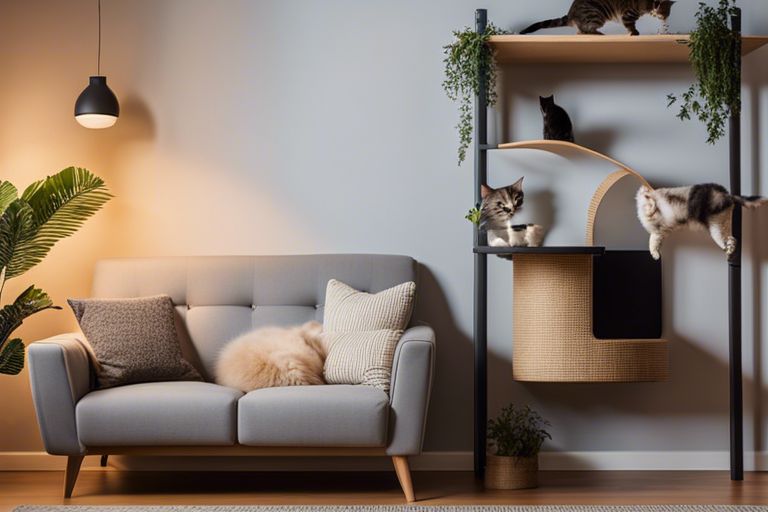
Creating a Stimulating Environment
Providing Vertical Space
Keep your feline friend entertained and active by providing vertical space where they can climb, jump, and observe their surroundings. Cats are natural climbers and enjoy being in high places, so incorporating cat trees, shelves, or perches can satisfy their need for vertical territory. This not only enhances their environment but also promotes exercise, mental stimulation, and helps to reduce boredom or stress.
Toys and Entertainment
Any cat owner knows that keeping their furry friend engaged and entertained is crucial for their well-being. Cats are curious creatures that require mental and physical stimulation to prevent behavioral issues and keep them happy. Provide a variety of toys that mimic hunting behaviors such as feathers, balls, tunnels, or puzzle feeders to keep your cat entertained and mentally sharp.
Although cats may have their preferences when it comes to toys, it’s necessary to rotate them regularly to prevent boredom. Additionally, interactive play sessions with your cat using wand toys or laser pointers can strengthen the bond between you and provide much-needed exercise for your kitty.
Feeding and Litter Areas
Setting Up a Cat Dining Area
With proper planning, you can create a designated dining area for your cat that is both functional and cat-friendly. Choose a quiet spot away from high-traffic areas to place your cat’s food and water bowls. Cats prefer privacy while eating, so avoid placing their dishes near noisy appliances or their litter box.
Selecting and Placing Litter Boxes
Litter boxes are a crucial part of a cat-friendly home. It’s imperative to have one more litter box than the number of cats in your household and to place them in different areas of the home to provide options for your cat. Cats prefer clean and private spaces for elimination, so ensure the litter box is large enough for them to move comfortably and located in a quiet, easily accessible location.
A covered litter box can provide your cat with privacy and help control odors, but some cats may prefer open litter boxes. It’s important to experiment with different types of litter boxes to determine what your cat prefers. Scoop the litter box daily and change the litter regularly to maintain a clean and inviting space for your feline friend.
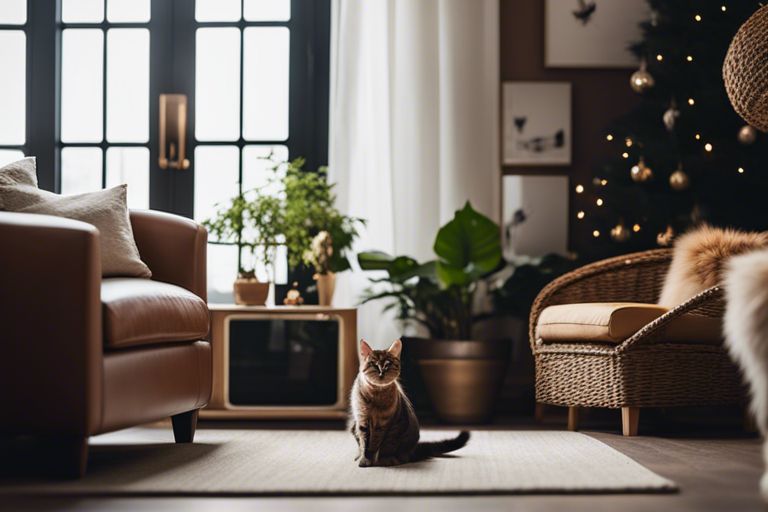
Dealing with Scratching Behavior
Scratching Posts and Pads
All cats have a natural instinct to scratch, so providing appropriate outlets for this behavior is crucial. Investing in a variety of scratching posts and pads can help redirect your cat’s scratching away from furniture and other off-limits surfaces. Place the posts in strategic locations around your home where your cat likes to scratch, such as near their favorite sleeping spots or by entryways.
Deterrents and Training
On the other hand, if your cat is still drawn to scratching furniture despite having scratching posts available, you may need to explore deterrents and training methods. There are various products on the market, such as double-sided tape or citrus sprays, that can help deter cats from scratching certain surfaces. Additionally, positive reinforcement techniques can be used to encourage your cat to use their scratching posts instead. Whenever you see your cat using the post, praise and reward them to reinforce the behavior.
To successfully train your cat to use scratching posts instead of furniture, consistency is key. Repetition and positive reinforcement will help your cat understand what behavior is acceptable. Avoid using punishment or declawing as these methods can be harmful and compromise your cat’s well-being. By providing the right tools and guidance, you can help your cat develop good scratching habits while protecting your home furnishings.
Summing up
Drawing together all the tips provided in this guide, creating a cat-friendly home involves taking various measures to cat-proof your space. Ensuring your feline companion’s safety and well-being requires attention to details such as securing windows, eliminating toxic plants, and providing adequate scratching posts and hiding spots.
By implementing these cat-proofing strategies, you can create a harmonious environment where your cat can thrive and feel at ease. Bear in mind, a cat-friendly home is not only beneficial for your pet’s happiness but also for your peace of mind knowing that your furry friend is safe and content in their surroundings.
FAQ
Q: Why is it important to cat-proof your home?
A: Cat-proofing your home is important to ensure the safety and well-being of your feline companion. Cats are curious animals and may get into hazardous situations if your home is not properly cat-proofed.
Q: What are some common household items that can be dangerous to cats?
A: Common household items that can be dangerous to cats include toxic plants, human foods like chocolate and onions, string or small objects that can be swallowed, and chemicals such as cleaning products.
Q: How can I make my windows safe for my cat?
A: To make your windows safe for your cat, make sure they are securely screened to prevent your cat from falling out. Consider installing window perches or cat shelves to provide a safe and comfortable vantage point for your cat.
Q: What are some tips for creating a cat-friendly living space?
A: To create a cat-friendly living space, provide plenty of vertical space for climbing and perching, offer scratching posts and pads, create cozy resting areas with soft bedding, and provide interactive toys for mental stimulation.
Q: How can I prevent my cat from scratching furniture?
A: To prevent your cat from scratching furniture, provide plenty of scratching posts and pads in strategic locations throughout your home. You can also use deterrent sprays or double-sided tape on furniture to discourage scratching.
